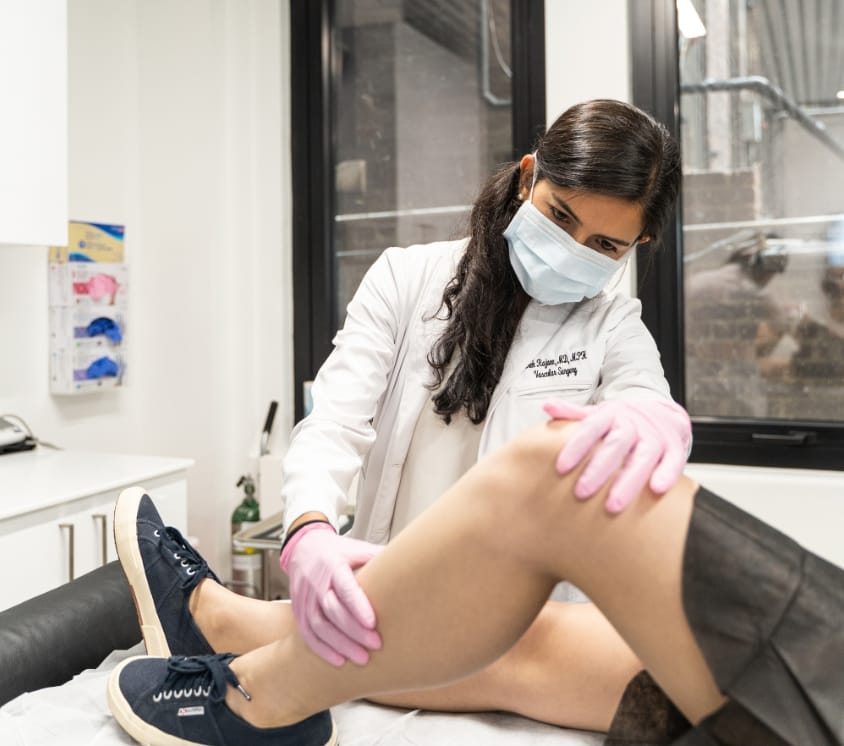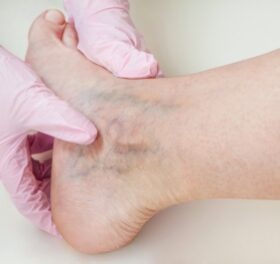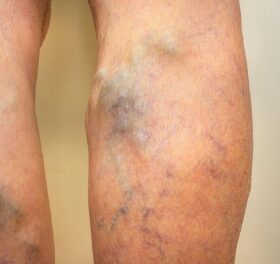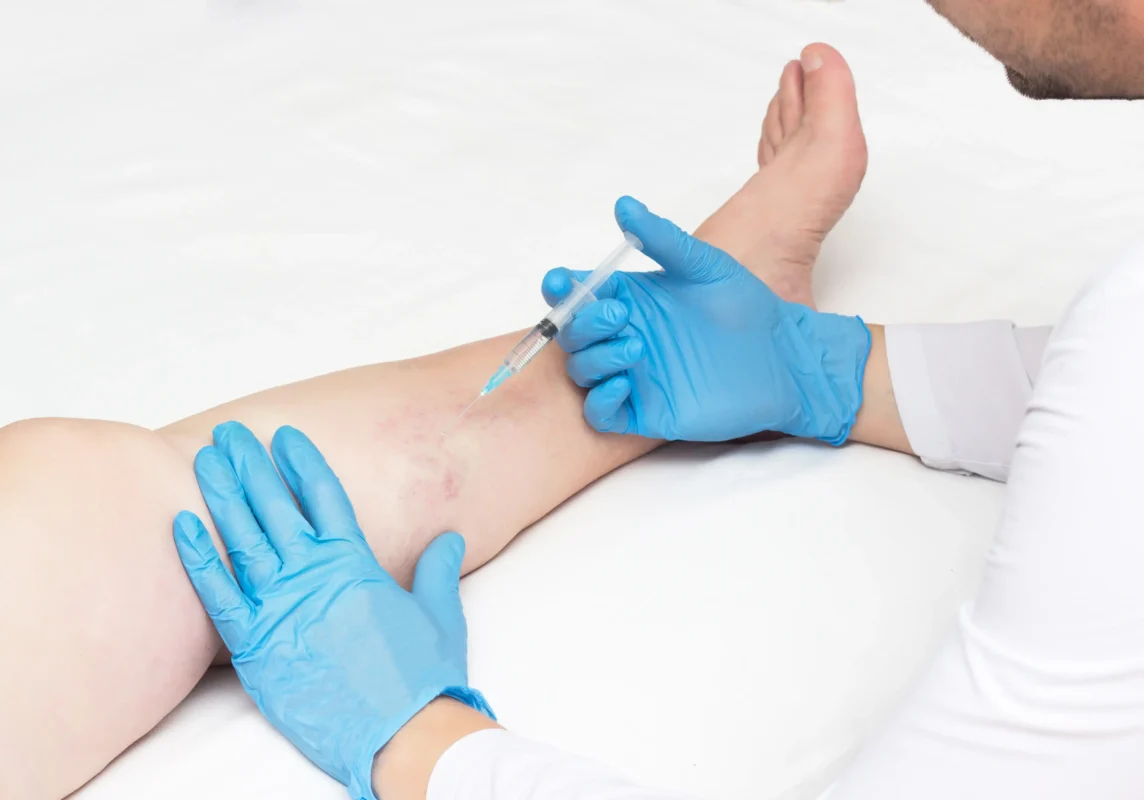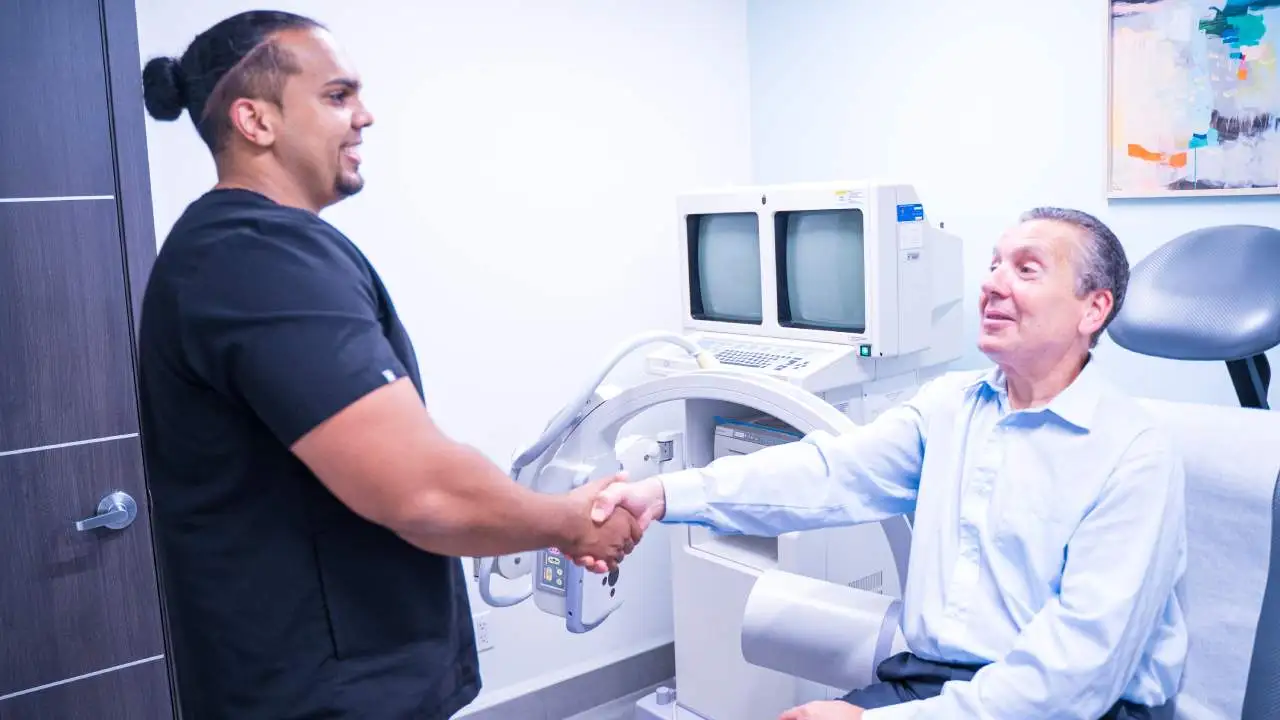Can venous reflux be cured?
Venous reflux, also known as chronic venous insufficiency (CVI), is a condition that affects blood flow in the veins. It is a common medical problem often seen in people who stand or sit for extended periods. Left untreated, venous reflux can lead to painful ulcers, deep vein thrombosis, blood clots, and other complications. Venous insufficiency can’t be cured because the diseased saphenous vein can’t be fixed, but the condition can be treated.
A few treatment methods are available, and they are determined by the individual’s specific circumstances. The first line of treatment is typically lifestyle changes, such as wearing compression stockings, taking frequent breaks, and exercising. This will reduce the swelling, improve circulation, and make the veins less likely to bulge outwards. However, lifestyle changes can only control the symptoms — not treat the underlying problems.
The best way to treat venous reflux is with minimally invasive spider vein and varicose vein treatments, such as sclerotherapy, endovenous laser ablation, radiofrequency ablation, venaseal, and clarivein. Your vein doctor will carefully examine your leg veins, discuss your symptoms, administer duplex ultrasound tests to visualize the root cause of your vein problems, and curate a personalized vein treatment plan.
No matter the cause or severity of your venous reflux, options are available for treating the condition. If you are suffering from CVI, you should speak to your vein doctor to discuss the best treatment plan. Vein Treatment Clinic is led by some of the best board-certified vein doctors specializing in minimally invasive treatments, such as sclerotherapy and laser ablation. You can find our vein doctors in New York, Long Island, New Jersey, California, or Maryland.
You can find our vein clinic in Bethesda, Maryland, if you’re in or around the Nation’s Capital. Please schedule an appointment at your nearest vein clinic.
What is CVI in medical terms?
Chronic Venous Insufficiency (CVI) is a condition where the veins, usually in the lower legs, do not effectively carry blood back to the heart. As a result, it can cause pain, swelling, and discomfort. Over time, this condition can worsen and lead to complications like skin ulcers, skin discoloration, infection, bulging varicose veins, and deep vein thrombosis. CVI happens when the valves in the veins that allow blood flow to the heart become weakened and damaged.
If you have CVI, you’ll likely experience swelling and pain in your legs. You may also have discoloration (darker skin color) on the affected limb. Other symptoms may include feeling heaviness in the legs, itching, and even skin ulcers. You may also notice spider veins and varicose veins on your skin’s surface. Your vein doctor may want to use other tests or imaging, such as duplex ultrasound, to determine the severity of your CVI.
Chronic venous insufficiency can be frustrating, but it can be managed with the right treatment. If you’re experiencing any symptoms of CVI, don’t hesitate to make an appointment with your vein doctor to discuss the best way to care for your condition.
What are the risk factors for chronic venous insufficiency?
Certain risk factors have been identified that may increase a person’s risk for developing CVI. These risk factors include:
- Age: CVI is most common in those over the age of 50. As the body ages, the valves in veins become weaker, increasing the chances of CVI.
- Gender: Women are more at risk for CVI than men, as they tend to have weaker vein valves than men.
- Pregnancy: During pregnancy, the risk of developing CVI is significantly increased. The combination of increased blood volume and increased levels of certain hormones can weaken vein valves.
- Sedentary lifestyle: Those with a sedentary lifestyle are more at risk for CVI, as sitting or standing for long periods can strain the veins, straining their valves.
- Obesity: Those that are overweight or obese are more likely to develop CVI, as the exertion of extra weight can decrease the strength of vein valves.
- Family history: A family history of CVI has also been linked to an increased risk of developing the condition.
- Previous leg injury: A leg injury can weaken vein valves, increasing a person’s risk for CVI.
Are varicose veins reversible?
Are varicose veins reversible? It’s a question many people ask themselves when they are faced with unsightly, bulging veins that can be painful and uncomfortable. Unfortunately, the answer is not always straightforward, as it depends on a range of factors, like the severity of the case and the health of the individual.
As a rule of thumb, varicose veins are easier to treat when caught early. However, it’s also possible to make some lifestyle changes that can help to reduce the appearance and symptoms of varicose veins. The most common strategies are to:
- Exercise regularly
- Manage your body weight
- Elevate your legs when sitting or lying down
- Avoid tight clothing
- Wear compression stockings
These measures can reduce the pressure on the veins and improve circulation, reducing the severity of your symptoms. But lifestyle changes alone can’t treat varicose veins or the underlying chronic venous insufficiency. The only way to treat varicose veins and underlying vein disease is with minimally invasive procedures, such as radiofrequency ablation, endovenous laser ablation, venaseal, and sclerotherapy.
If you have varicose veins or the signs and symptoms of vein disease, please contact your nearest vein doctor for diagnosis and treatment.


